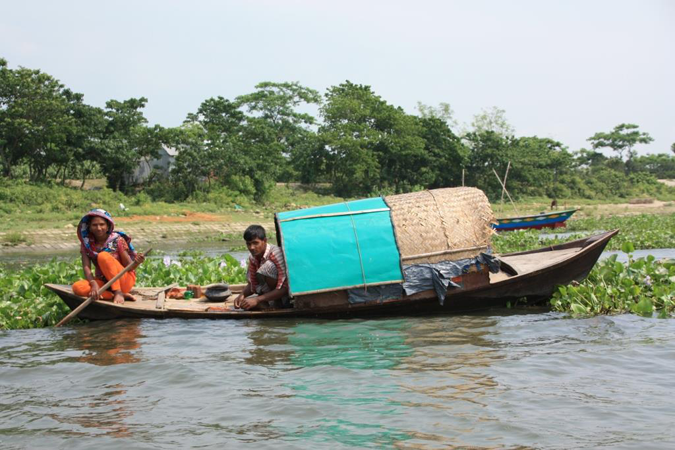Bangladesh is for a water scientist what London is for a banker or Hawaii for a surfer. Bangladesh is the land of rivers. Water is on all sides. All sorts of water-related issues, from coastal floods to arsenic contaminated groundwater, can be seen somewhere in Bangladesh.
Some people call Bangladesh a water civilization because successful water management has been crucial for the establishment of civilization in this low-lying delta. It is certainly not a coincidence that Bangladesh’s ruling party, the Awami League, has a boat as its election symbol. The Bangladesh Water Development Board, the government’s agency for managing water resources has the largest budget among government planning agencies. Water is embedded in Bangladesh life and politics.
Visiting the coastal areas of Bangladesh, close to the world renowned mangrove forests of the Sundarbans, I immediately noticed the multi-dimensional aspects of the water challenges faced by many communities in Bangladesh. Water risks stem from living in a tidal floodplain facing one of the most cyclone-generating oceans of the world or from cultivating rice in areas which are periodically inundated by saline waters. As a water scientist, my mind started racing to think about possible solutions to prevent flooding or provide reliable drinking water supply.
Some of the solutions that have been proposed to tackle coastal flooding come from The Netherlands, another country where water is considered an existential threat to the nation, so much that the Dutch ‘do not fight wars, they fight water’. The Dutch way of living in a low-lying delta relies on the polders – a system of embankments, drainage systems and pumps used to keep the water out of low-lying areas to make them suitable for cultivation and human activities.
The majority of Bangladesh’s coastal communities now live inside polders which were designed in the 1960s, following the Dutch paradigm to coastal flood risk management. This polder system was designed to protect from regular tidal flooding and it is not coping well with the increasingly severe cyclones that hit south-west Bangladesh.
The Government of Bangladesh is currently engaged in a major initiative to rehabilitate some of the polders, yet questions remain on how to integrate these structural engineering measures with other measures to improve the adaptability of coastal communities. To make the polder system ‘work’, we may need to stop reacting to water challenges, such as coastal flooding, as isolated issues. We need to avoid the temptation, which grabbed me several times during the trip, to focus on solutions to specific problems and move towards a system view, which seeks to understand how each part (e.g. groundwater supply, salinisation, water logging) occurs and causes harm in relation to the whole.
The tough living conditions in coastal areas have led many poor people into the already congested capital, Dhaka. Many of these people leave rural areas to seek work in the garment industry. Bangladesh is the second largest producer of garments in the world. The garment industry mainly employs women and although the boom of this industry has given employment to many people, it has also had led to many problems including labour exploitation and death of workers.
In Dhaka we spoke to the garment manufacturer association, who recognised the importance of water to their trade, though they admitted being unaware of how much water they consume and how much they contribute to polluting surface waters and to groundwater depletion in Dhaka. Again I found myself wondering if systems thinking would make the Bangladeshi garment industry improve its water footprint.
The Bangla language distinguishes between the normal beneficial floods of the rainy season, which are termed barsha, and harmful floods of abnormal depth and timing, which are termed bonna. This separation between good waters and bad waters shows how the opportunities and threats linked to water are deeply engrained in Bangladesh’s culture and have carved this country’s history and development.
The task ahead for the REACH programme is to harness opportunities for water to contribute towards poverty reduction and sustainable economic growth, while reducing water risks that threaten lives and livelihoods.

